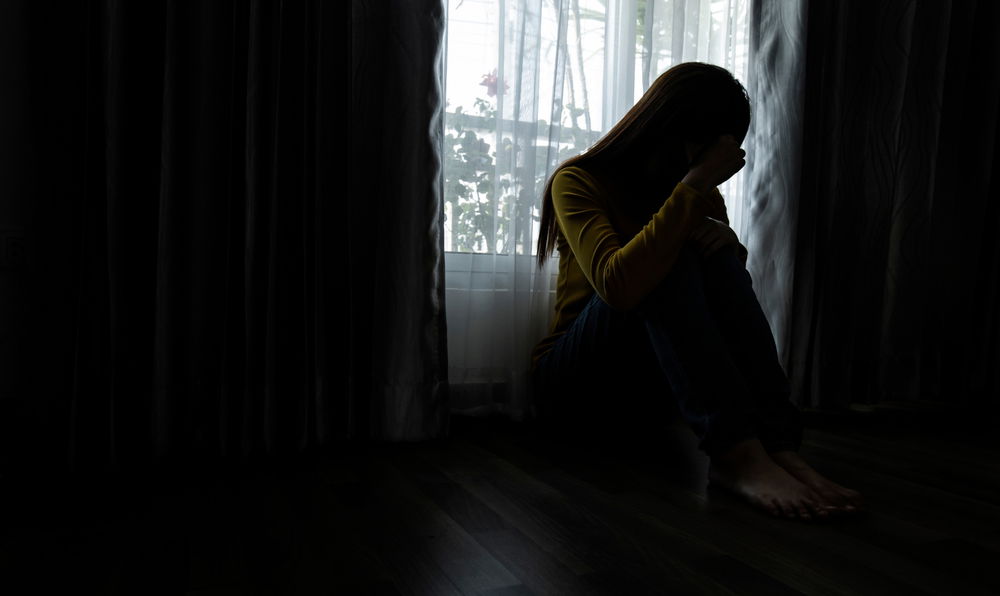Highlights
- The second half of Reeves' new book exemplifies a major problem in American public life, where ideology prevents us from honestly addressing our biggest social issues. Post This
- Reeves’ prescriptions do not upend any of the orthodoxies of our ruling class. Post This
- Reeves does a great job of laying out the problems facing boys and men. He should be congratulated for the high quality of his writing. Post This
It’s not exactly unknown that boys and men are struggling in America. A number of books have already been written on the topic from Warren Farrell’s The Boy Crisis to Kay Hymowitz’s Manning Up. But much of this work to date has come from people who are somewhat marginal to the mainstream conversation (often conservatives). Richard Reeves’ new book on the topic, Of Boys and Men, is different in that, while it covers much of the same ground, it’s from a Senior Fellow at the Brookings Institution, the most establishment center-left think tank. Which makes it a mainstream book.
Reeves provides an overview of the data on male underperformance that's well known to social scientists and many institutional insiders but not especially present in the public discourse. For example, men’s real wages have declined by 14% since 1979, while women’s wages have grown. Labor force participation by prime working-age men has declined, with nine million prime working-age men not in the labor force even prior to Covid-19. Boys underperform in school and are attending college at rates much lower than women. Women earned 15% more bachelor’s degrees than men in 2019. Reeves also specifically chronicles the fortunes of black boys and men, which have fallen farthest. The number of black men in prison is particularly alarming. Of low-income black men born in 1980, one out of every seven, or 16%, were in prison 30 years later. Reeves emphasizes, “not that they had been to prison…but that they were in prison.”
The book also notes the hostility society often directs at men today, such as labeling perfectly normal male behavior as “toxic masculinity.” This is part of an even-handed critique of both liberals and conservatives by Reeves, explaining how each side has failed to adequately address the plight of males. Liberals, for example, tend to blame men as individuals, overlooking the structural disadvantages men sometimes face. He notes men were more likely to die from Covid-19 than women, for example. And, although he acknowledges the unique biological differences between men and women, he thinks conservatives make too much of these differences, while progressives try to deny or ignore them.
In easy-to-read and compelling prose, Reeves does a great job of laying out the problems facing boys and men. He should be congratulated for the high quality of his writing.
In the second half of the book, however, he stumbles. His recommendations are largely small scale. For instance, he wants boys to start school a year later than girls because their brains develop slower. He wants more male teachers in classrooms. He wants better vocational education. Measures like these are not likely to do much to reverse the precipitous slide of males.
Moreover, Reeves’ prescriptions do not upend any of the orthodoxies of our ruling class. Since he’s at an establishment institution, his ability to defy the consensus ideological commitments of the American elite is limited. In fact, he explicitly signals his acceptance of them. He repeatedly makes clear his full support for feminism, praises intersectionality, and uses terms like “cis heterosexual.” None of his recommendations fundamentally challenge any ideological lines.
But he is influenced by a second wave feminist style orientation reminiscent of Men’s Rights Activists (MRAs). In my review of Cassie Jaye’s documentary about MRAs, I noted that their goal appears to be the completion of the gender equalitarian vision of second wave feminism. They just want to address areas of statistical disparity and legal inequalities that disfavor men and to free men from traditional gender role expectations that they view as overly restrictive and socially constructed.
While not an MRA himself, Reeves’ work seems to be heavily inflected with this sort of thinking. He accepts the feminist egalitarian agenda, and simply wants a similar agenda to help men where they are struggling or underserved. While acknowledging the biological basis of some sex differences, he appears to believe most of our sex roles are socially constructed—and should be reconstructed. Just as feminists wanted women to have access to traditionally male domains, he, like the MRAs, wants men to not be constrained to traditionally-male occupations and roles, and to have access to domains like caregiving. In fact, Reeves calls for policies pushing men into female-dominated professions—Health Care, Education, Administration, Literacy (or HEAL). In his world, society would have less gender polarity. More women would be engineers. More men would be nurses. It’s especially notable that the one area where he does offer a potentially controversial challenge to the status quo is in child custody and support laws—calling for a presumption of equal parenting time in cases of divorce, for example—also the central concern of MRAs.
The directional similarity of Reeves’ recommendations to the MRA agenda shows why it won’t get much traction. The MRA vision never inspired a material number of men, and neither will Reeves. In part, this is because he wants men to become more like women, a project that will never appeal to ordinary guys. He cites David Gilmore’s very interesting book Manhood in the Making, which is an anthropological survey of how a diverse set of cultures around the world have defined manhood as a distinctive identity that builds on men’s strengths rather than seeks to minimize them. But Reeves rejects Gilmore’s insights. His agenda would be more compelling to ordinary men if he had worked with the grain of Gilmore’s findings on the common themes of manhood rather than against them.
Reeves cites plenty of research showing the negative impact of single motherhood on boys. Yet he appears to have no desire to renew the legal or cultural foundations of marriage, the very institution that connects fathers to their boys.
Apart from his small ball tweaks to public education, Reeves’ recommendations are also arguably just a continuation of the women’s movement by other means. He calls on men, for instance, to spend more time on child care. This would conveniently fill the child care gap he thinks needs to be addressed in order to allow women to focus more on career. “There is no getting around it: if we want equality at work, we need equality at home,” he writes. Even some of his proposed reforms to the child support and custody regime are designed to facilitate this childcare role for men; he wants men to be able to reduce monetary child support by providing child care.
Multiple times, Reeves makes reference to his bravery for writing this book. Sadly, he’s right. Simply providing certain facts is—by itself—considered controversial and unacceptable in our society. So how much more so would be any recommendations that might challenge major aspects of the ideological status quo. Reeves perhaps wisely doesn’t go there, but that accounts in part for why his program likely won’t move the needle.
Just to give one example of what a more robust program might look like, Reeves cites plenty of research showing the negative impact of single motherhood on boys. Yet he appears to have no desire to renew the legal or cultural foundations of marriage, the very institution that connects fathers to their boys—because that would impinge on unlimited female choice. As he writes:
Governments increasingly see their role as supporting women in raising children, in part so that they are not trapped in a dependent relationship with a man. At the same time, there has been a liberalization of divorce law.
His view is that these “are clearly here to stay.” Of these and other trends he says, “From a feminist perspective these are marvelous developments.” The feminist perspective is, of course, his own. But there’s little prospect of improving the prospects for boys, especially the most vulnerable ones, without reducing single motherhood. Doing that will require that women as well as men do things differently.
Similarly, although he acknowledges that our trade regime hurt predominantly male occupations, Reeves declines to challenge globalization. And he never even mentions immigration, which likewise undermined men economically, with racist employers particularly preferring to hire immigrants over black men.
The second half of his book, then, exemplifies a major problem in American public life—one where ideology prevents us from honestly addressing our biggest social issues—that is not specific to Reeves’ book. The same ideological straightjacket affects pretty much every other area of society as well, from opioids to homelessness. Which is why we have not been able to successfully address any of them. As a society, we must find a way to create the space in which the real sources of and potential solutions to serious social issues can be publicly discussed and ultimately confronted if we actually want to make progress in fixing any of them. Reeves is to be commended for raising the issue. But when it comes to addressing our male malaise, that must include the courage to articulate a vision of 21st century masculinity that builds upon the distinctive gifts of men—especially if we are to have a remote chance of attracting ordinary men’s allegiance.
Aaron M. Renn is a co-founder and Senior Fellow at American Reformer. His writings appear at aaronrenn.com.
Editor's Note: The opinions expressed in this article are those of the author and do not necessarily reflect the official policy or views of the Institute for Family Studies.













